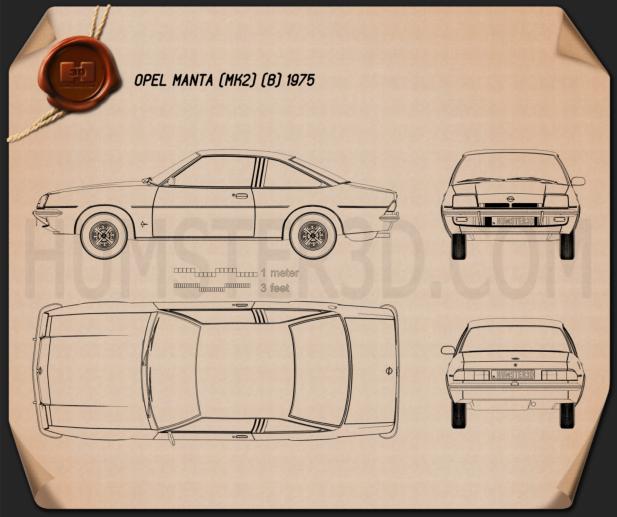

In four-cylinder form, this engine reached only limited production as the Kadett GT/E's 20EH engine. Opel developed their own crossflow head for the CIH block, and tested it in the experimental GT-2 of 1975 with the intent of installing it in the production model. Unlike its smaller stablemate - the Opel OHV, the CIH was never adapted for transverse mounting (for front wheel drive applications), and was always found in rear wheel drive Opel/Vauxhall cars. The CIH engine was also lighter (negated somewhat by the use of a cast iron head) and was expected to require less maintenance than an OHC design. For one, the lower head allowed for a correspondingly lower bonnet line. While an improvement over a cam-in-block engine, the advantages over an OHC design were limited. Later engines of over two litres received longer strokes up to 77.5 mm (3.05 in) for the 2.2 and 85 mm (3.35 in) for the 2.4 (also used for the 3.6 litre inline-six version). The CIH engine was oversquare, with the original three versions having a stroke of only 69.8 mm (2.75 in). The head and block are both made from cast iron.

This led to lowered fuel economy but was considerably cheaper to manufacture. The cylinder head is a non-crossflow layout. While the earliest engines used mechanical lifters, later versions used hydraulic tappets, which Opel pioneered for mass market production in the Family II unit which ultimately replaced the CIH.

The camshaft is driven by a roller chain. Rather it can be thought of as a cam-in-block engine with a greatly shortened valve drivetrain. Īlthough the camshaft is in the cylinder head, the CIH is not a true overhead camshaft design. The original design of the cam-in-head engine was done by General Motors in Detroit, Michigan. This engine debuted in the Opel Rekord D in 1972.ĭesign 1.9L Opel CIH - Front Cross Section A large capacity 2.4L four-cylinder version continued until 1998.Ī diesel version of the CIH was also developed. The engine first appeared in the Opel Rekord B in 1965, and was largely replaced in four-cylinder form by the GM Family II unit as Opel/Vauxhall's core mid-size engine in the 1980s, with the six-cylinder versions continuing until 1994 in the Omega A and Senator B. The valves are actuated through very short tappets and rocker arms. In the CIH engine the camshaft is located in the cylinder head but sits alongside the valves rather than above them, so therefore effectively is still an overhead valve design. The name derives from the location of the camshaft, which was neither cam-in-block nor a true overhead camshaft. Both four- and six-cylinder inline configurations were produced. After all, it was released in 1975, the year that both her husband and the first Ascona B first saw the light of day.The Opel cam-in-head engine (CIH) is a family of automobile engines built by former General Motors subsidiary Opel from 1965 until 1998, appearing extensively in Opel/Vauxhall badged cars during this period. She’s just as impressed by this old school Opel as he is. His wife Irene has now come to enjoy the pleasures of sitting behind the wheel of her very own Ascona B. Fuchs pounced on the opportunity, and all he had to do was tinker with the engine a little. “The previous owner was an automotive painter,” says Holger Fuchs. This model was also produced in 1980, but was perfectly assembled and painted in gleaming, immaculate white. This means that Fuchs’ classic also serves as a reminder of Opel’s history in Kaiserslautern.Īnd as if someone out there wanted to reward him for his hard work, another opportunity came on the horizon a few weeks ago: Another Ascona B had been put up for sale.
1981 OPEL MANTA 400 BLUEPRINT SERIES
The 81 kW/110 hp unit was only installed in the Ascona B in 19, and originates from the so-called “Family II” – the engine series produced by the company that is now his employer. However, the 2.0 liter injection engine at the heart of his most prized possession is what brings its proud owner the greatest joy.


 0 kommentar(er)
0 kommentar(er)
